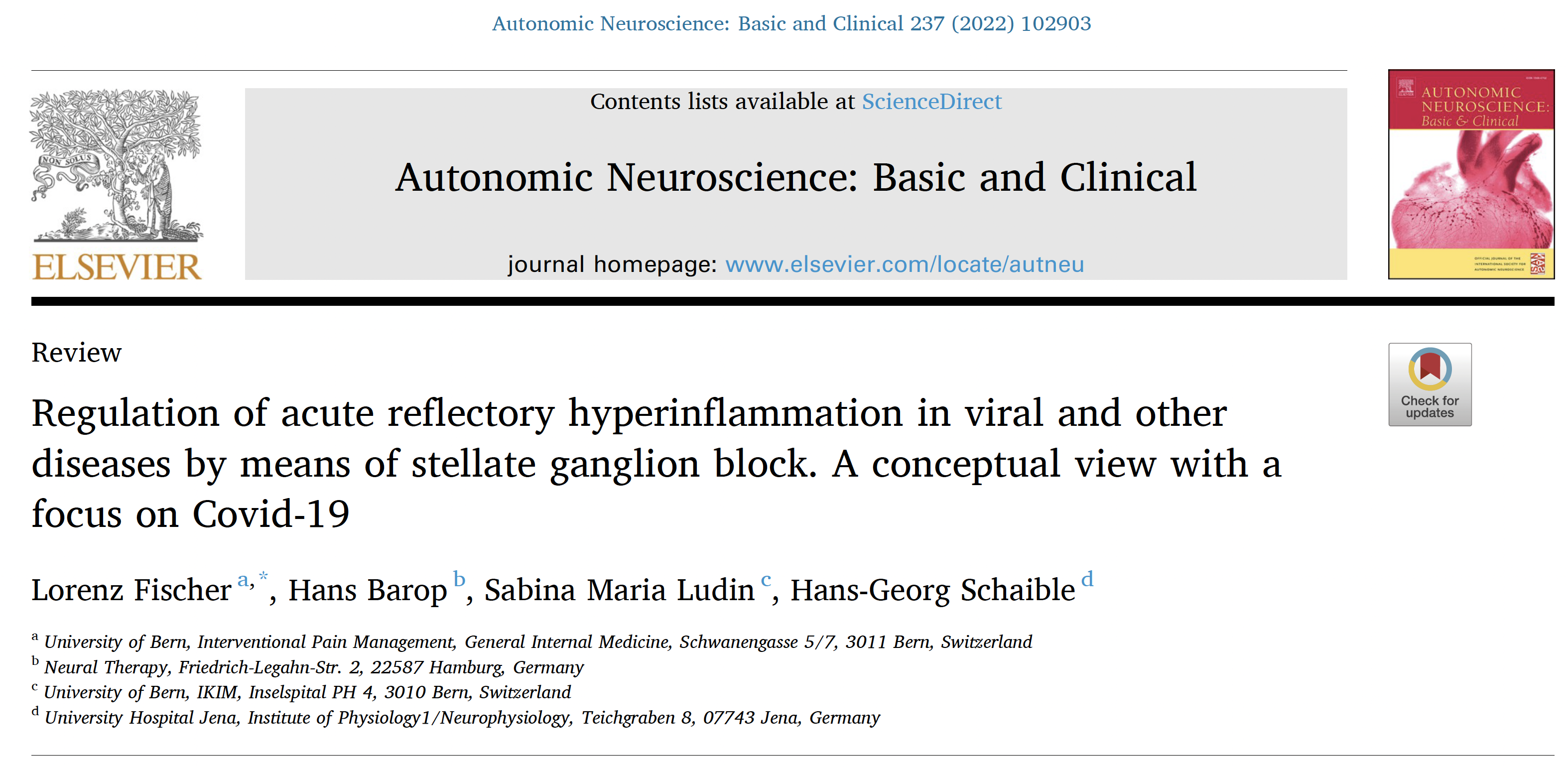
Abstract
Whereas the autonomic nervous system (ANS) and the immune system used to be assigned separate functions, it has now become clear that the ANS and the immune system (and thereby inflammatory cascades) work closely together. During an acute immune response (e. g., in viral infection like Covid-19) the ANS and the immune system establish a fast interaction resulting in “physiological” inflammation. Based on our knowledge of the modulation of inflammation by the ANS we propose that a reflectory malfunction of the ANS with hyperactivity of the sympathetic nervous system (SNS) may be involved in the generation of acute hyperinflammation. We believe that sympathetic hyperactivity triggers a hyperresponsiveness of the immune system (“cytokine storm”) with consecutive tissue damage. These reflectory neuroimmunological and inflammatory cascades constitute a general reaction principle of the organism under the leadership of the ANS and does not only occur in viral infections, although Covid-19 is a typical current example therefore. Within the overreaction several interdependent pathological positive feedback loops can be detected in which the SNS plays an important part. Consequently, there is a chance to regulate the hyperinflammation by influencing the SNS. This can be achieved by a stellate ganglion block (SGB) with local anesthetics, temporarily disrupting the pathological positive feedback loops. Thereafter, the complex neuroimmune system has the chance to reorganize itself. Previous clinical and experimental data have confirmed a favorable outcome in hyperinflammation (including pneumonia) after SGB (measurable e. g. by a reduction in proinflammatory cytokines).
Keywords
Autonomic nervous system, Hyperinflammation, Cytokine storm, Covid-19, Stellate ganglion block, Local anesthetics
.
Whereas the autonomic nervous system (ANS) and the immune system used to be assigned separate functions, it has now become clear that the ANS and the immune system (and thereby inflammatory cascades) work closely together. During an acute immune response (e. g., in viral infection like Covid-19) the ANS and the immune system establish a fast interaction resulting in “physiological” inflammation. Based on our knowledge of the modulation of inflammation by the ANS we propose that a reflectory malfunction of the ANS with hyperactivity of the sympathetic nervous system (SNS) may be involved in the generation of acute hyperinflammation. We believe that sympathetic hyperactivity triggers a hyperresponsiveness of the immune system (“cytokine storm”) with consecutive tissue damage. These reflectory neuroimmunological and inflammatory cascades constitute a general reaction principle of the organism under the leadership of the ANS and does not only occur in viral infections, although Covid-19 is a typical current example therefore. Within the overreaction several interdependent pathological positive feedback loops can be detected in which the SNS plays an important part. Consequently, there is a chance to regulate the hyperinflammation by influencing the SNS. This can be achieved by a stellate ganglion block (SGB) with local anesthetics, temporarily disrupting the pathological positive feedback loops. Thereafter, the complex neuroimmune system has the chance to reorganize itself. Previous clinical and experimental data have confirmed a favorable outcome in hyperinflammation (including pneumonia) after SGB (measurable e. g. by a reduction in proinflammatory cytokines).
Keywords
Autonomic nervous system, Hyperinflammation, Cytokine storm, Covid-19, Stellate ganglion block, Local anesthetics
.
